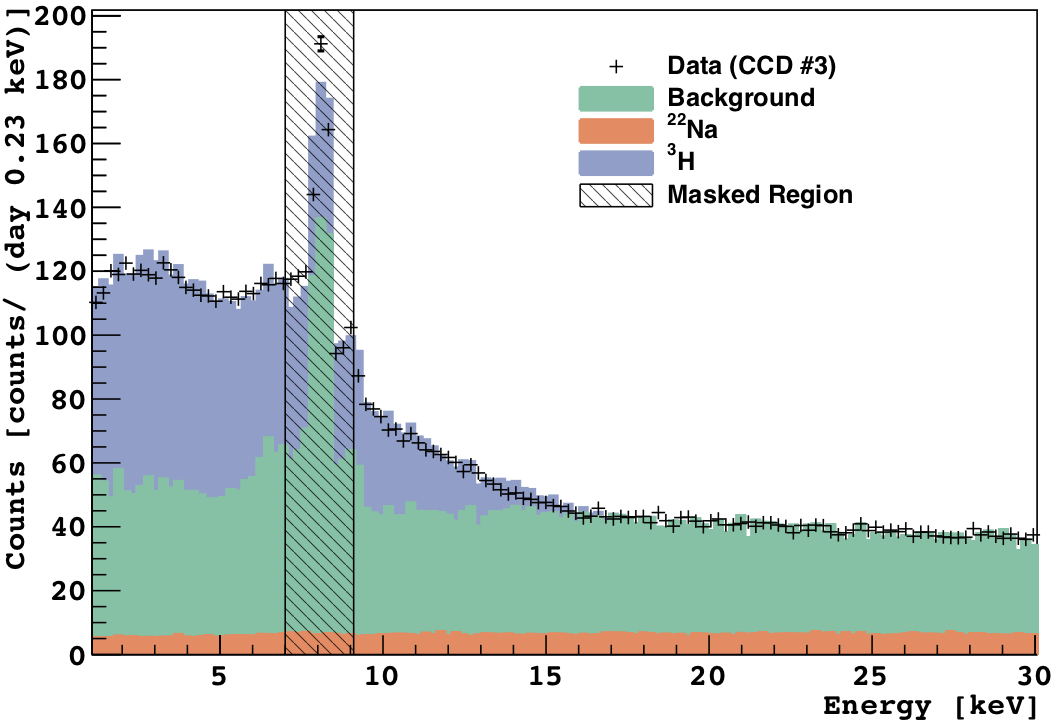We recently posted on the arXiv our measurement of the cosmogenic activation of tritium in silicon.
Tritium (3H) produced in the bulk silicon of CCDs by cosmic rays can be a problem for silicon dark matter experiments because the background from the low-energy beta particles can interfere with the dark matter signal. Tritium will accumulate in the silicon crystal starting when the ingot is pulled, throughout wafering and CCD fabrication, until the final devices are brought underground for the dark matter search. Thus, we measured the activation rate of cosmogenic tritium in silicon to determine the maximum time that the CCD silicon can spend on the surface before tritium decays become a limiting background for the DAMIC-M experiment.
For this measurement, we irradiated three 8-megapixel CCDs at Los Alamos Neutron Science Center (LANSCE). The neutron flux mimics the cosmic-ray energy spectrum but with much higher intensity. We acquired dark images with the irradiated CCDs to perform spectroscopy of the beta decays detected in the bulk silicon of the devices and measured the tritium decay rate. By scaling the quantity of tritium activated in the CCD by the relative neutron fluence, we obtained a cosmogenic neutron activation rate of (112±24) atoms/kg/day.
|
|
| Fit to the energy spectrum of ionization signals in the irradiated CCD with Monte Carlo templates that include a realistic model of the CCD response. The hump of events below 18 keV from the radioactive decay of tritium is evident. |

